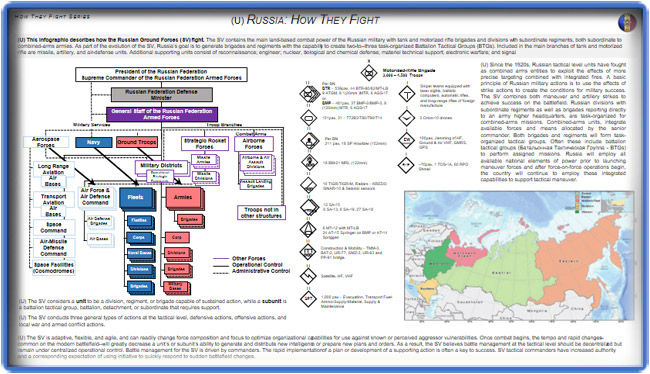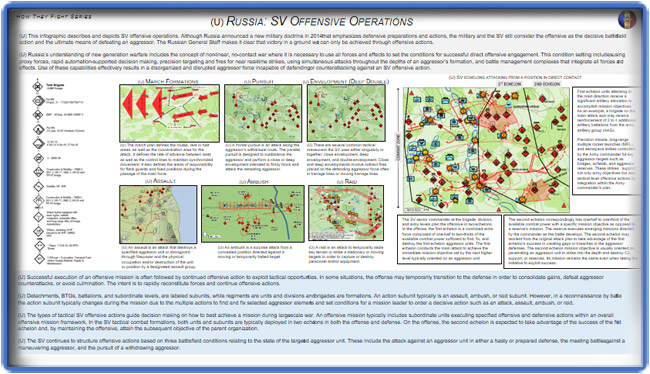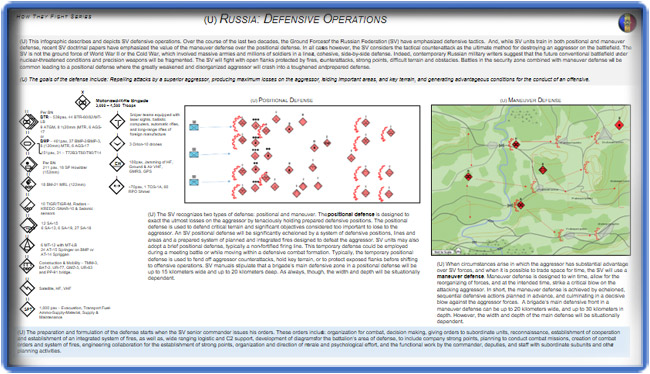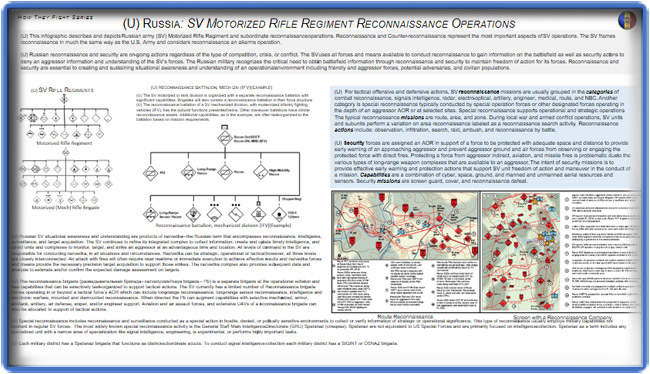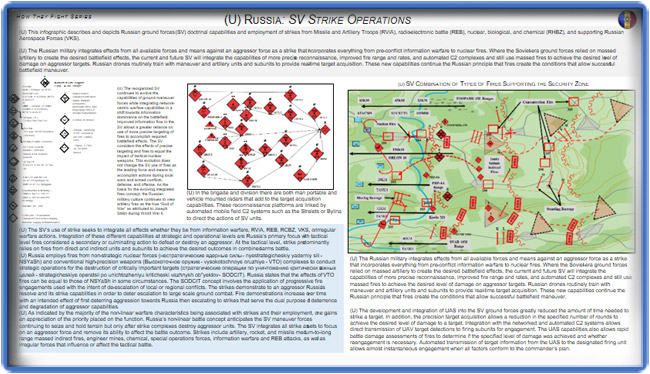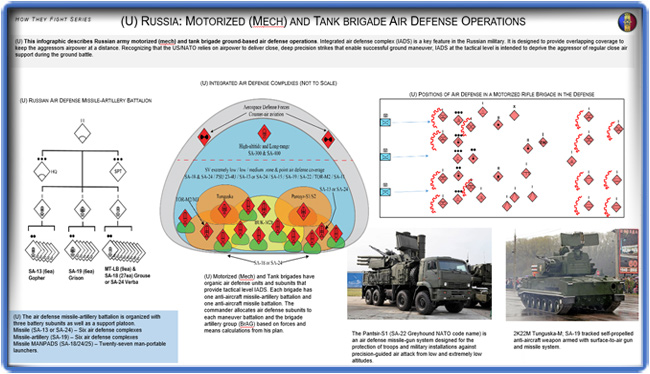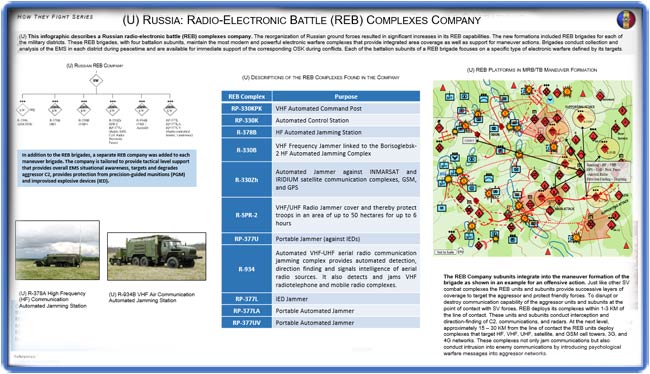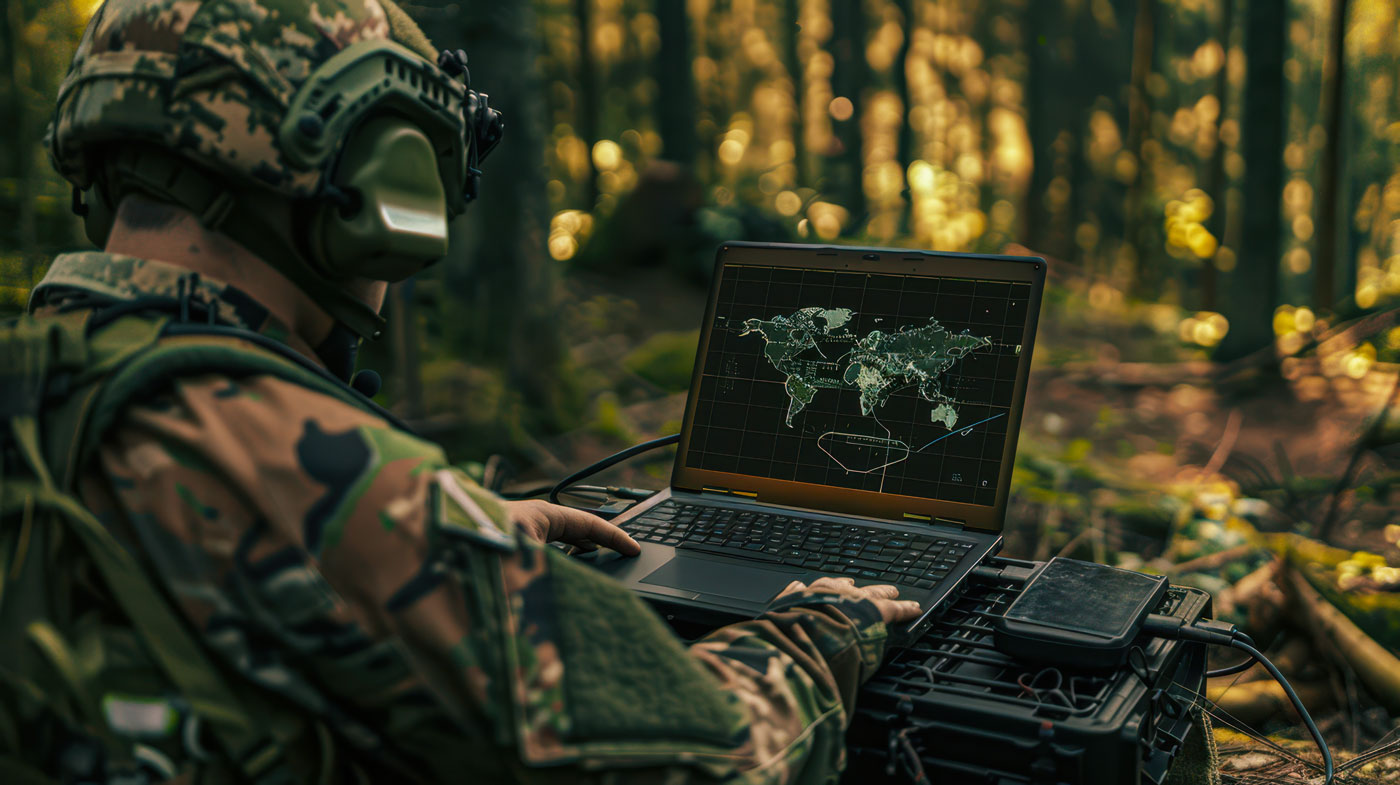Understanding the Russia
Landing Zone
The Russia landing zone, a one stop location for all things Russia, provides information on Russian military doctrine, organization, and tactics in order to support educating the U.S. Army on how Russian ground forces fight.
Each Landing Zone is a dynamic, one-stop resource for understanding how threat forces are structured, operate, and fight. Content is regularly updated—check back often and subscribe to stay informed.
What's New
Russia Claims Victory in Vostok 2022 Exercise
Russian Navy Weaponizes Shipping Containers
U.S. Army Strength is Our NCO Corps infographic
Russia Suspected of Distributing Former Syrian Military Assets To Mali
Russia Expanding Its Military Influence in Equatorial Guinea
Chechen Spetnaz Instructors Training Russian Soldiers in the Arctic Region
Russia Shrugs Off Stricter Energy Sanctions, Promises Retaliation
The Evolution of Russian Unmanned Vehicle Doctrine in Ukraine
War in Ukraine Sociocultural Running Estimate 20 – Peripheral Impacts: The Baltics
ATP 7-100.1, Russian Tactics: Strike and Fires
Russia Claims Victory in Vostok 2022 Exercise
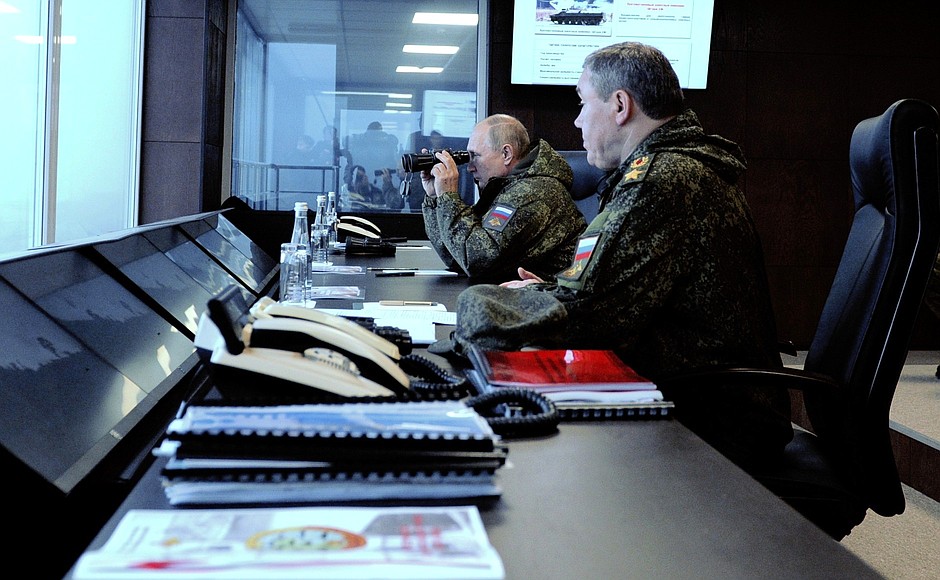
President Putin and Chief of General Staff Gerasimov, Vostok 2022, 6 September 2022.
One of Russia’s large-scale, annual military exercises, Vostok-2022, took place from 1-7 September. As with such exercises, it was widely covered in the Russian media, and as the brief excerpt from the Ministry of Defense’s TV Zvezda news network indicates, Russian forces again proved victorious. The article also stresses that Russia has not been isolated by its aggression against Ukraine, pointing out that 10 countries participated: Algeria, Armenia, Azerbaijan, Belarus, China, India, Kyrgyzstan, Mongolia, and Tajikistan. The article says that President Putin arrived at the Sergeevsky training ground to watch the final part of the exercises from a specially equipped command post. He watched his soldiers taking lines, liberating settlements, and forcing enemy retreats.
Sources:
Maxim Petrenko, Sergey Lebedev, “Враг уничтожен: как прошли учения Восток-2022»на полигоне Сергеевский (The enemy is destroyed: how did the exercises Vostok-2022 at the Sergeevsky training ground),” TV Zvezda (Ministry of Defense news network), 6 September 2022. https://tvzvezda.ru/news/2022961429-48GVw.html
Vladimir Putin watched the maneuvers from a specially equipped command post. From there, he fully assessed the operational situation. Real-time data came even from the distant borders of the huge test site. All thanks to cameras installed in the fields with 32x magnification.
At the same time, the Chief of the General Staff had a connection with all the commanders-in-chief. The most up-to-date information was received from the training ground to the Supreme Commander-in-Chief, the technical characteristics of the weapons used were shown on the screen.
According to the legend of the exercises, the mock enemy “Vostochnye” attacked the “Northern” and their allies, wedging 200 kilometers into the depth of defense. The enemy was stopped, suffered losses, but retained reserves. From this point, the action begins to unfold - a grouping of troops, supported by artillery and tactical landing forces, hitting the enemy, taking lines and liberating settlements. Massed strikes by rocket troops and artillery, breaking the enemy’s reserves as well, are forcing the enemy to retreat.
A special feature of Vostok this year is the creation ofa coalition grouping of the armed forces of ten countries - Russia, Azerbaijan, Algeria, Armenia, Belarus, India, Kyrgyzstan, China, Mongolia, Tajikistan. Operational groups of the defense departments of Kazakhstan, Laos, Nicaragua and Syria were also involved….…The participants of the maneuvers noted that all the goals of the exercises were fulfilled. The issues of ensuring military security in the Eastern Region have been worked out.
Image Information:
Image: President Putin and Chief of General Staff Gerasimov, Vostok 2022, 6 September 2022.
Source: http://en.kremlin.ru/events/president/news/69288
Attribution: CCA CA 4.0 Intl
Russian Navy Weaponizes Shipping Containers
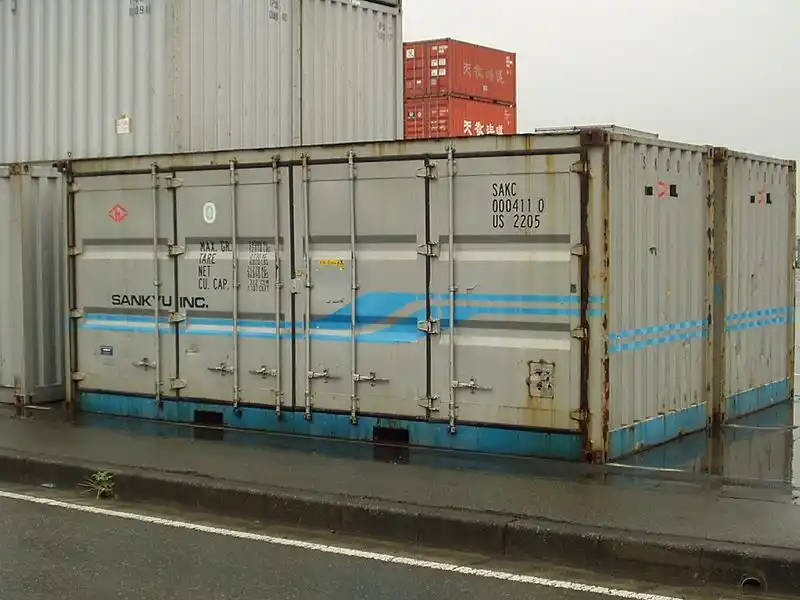
Shipping Containers.
For the defense of Russian combat and auxiliary ships, an electronic warfare (EW) system is being developed. The EW system will be placed in ordinary 40-foot shipping containers.
The accompanying excerpted article from pro-Kremlin daily newspaper Izvestiya describes Russian efforts to place electronic warfare systems in standard 40-foot shipping containers. The Russian Navy is also experimenting with other shipping container-based weapon systems involving air defense, anti-ship, and surface and underwater unmanned reconnaissance capabilities. These shipping container-based weapon systems are not only intended to augment the capabilities of the Russian Navy’s ships, but also auxiliary ships (tugboats, transports, fuelers, etc.) that support the Russian Navy, and commercial ships if necessary. Shipping container-based weapon systems are likely to become more important to the Russian Navy as it transitions from larger ships, such as cruisers and destroyers, which have many capabilities to smaller ships, such as frigates and corvettes, with fewer capabilities. These shipping container-based weapon systems will permit these small vessels to expediently and cheaply add capabilities as required.
Source:
Roman Kretsul, “Шумящий патруль: российские корабли защитят
системы радиоэлектронной борьбы (The ‘noisy’ patrol: Russian ships will be protected by electronic warfare systems),” Izvestiya (pro-Kremlin daily newspaper), 8 September 2022. https://iz.ru/1392104/roman-kretcul/shumiashchii-patrul-rossiiskie-korabli-zashchitiat-sistemy-radioelektronnoi-borby
For the defense of Russian combat and auxiliary ships, an electronic warfare (EW) system is being developed. The EW system will be placed in ordinary 40-foot shipping containers. Thanks to this, the system can be easily installed on the decks of ships and vessels. Such protective "boxes" should reliably protect ships and vessels from enemy missiles and drones by way of electromagnetic interference. According to experts, as a result, this decision will significantly strengthen the protection of the country's coastal regions.
The Project 22160 ‘Vasily Bykov’ patrol ships will be the first to receive this electronic warfare systems. In the future, auxiliary vessels of the Russian fleet - tugboats, transports and others – could also acquire it…Initially, a weaker electronic warfare system was installed on Project 22160 ships, military historian Dmitry Boltenkov told Izvestia.“Apparently, they created a more powerful solution, of operational or strategic designation. Containers allow you to put the system on different ships,” the expert explained. “If necessary, it will be possible to build up the electronic warfare system of ship groups. They will be able to enter a given area and, in fact, completely “turn it off”. First, they will suppress drone control channels and communication systems. It will no longer be necessary to drive an electronic warfare vehicle onto a landing ship, instead they will simply put a container.
The Navy is also actively testing new container modules — with weapons and with various auxiliary equipment —including the Redut and Pantsir-M air defense systems, container modules with anti-submarine equipment, and container modules with cruise missiles. In particular, the Kalibr-NK cruise missiles. But the main possibility is that they can be adapted for the employment of underwater and surface unmanned vehicles of all types. This provides a reconnaissance capability over hundreds of kilometers…
Image Information:
Image: Shipping Containers
Source: https://commons.wikimedia.org/wiki/File:Container_%E3%80%90_2205_%E3%80%91_SAKC_000411(0)---No,1_%E3%80%90_Container_pictures_taken_in_Japan_%E3%80%91.jpg
Attribution: Gazouya-japan
U.S. Army Strength is Our NCO Corps infographic
Russia Suspected of Distributing Former Syrian Military Assets To Mali
Russia Expanding Its Military Influence in Equatorial Guinea
Chechen Spetnaz Instructors Training Russian Soldiers in the Arctic Region
Russia Shrugs Off Stricter Energy Sanctions, Promises Retaliation
The Evolution of Russian Unmanned Vehicle Doctrine in Ukraine
War in Ukraine Sociocultural Running Estimate 20 – Peripheral Impacts: The Baltics
ATP 7-100.1, Russian Tactics: Strike and Fires
dive into Russian
military doctrine
Understand the Russian military approach to conflict and gain insight into how it organizes, equips, and operates.
ATP 7-100.1
Russian Tactics
Access the Army's doctrinal source on the Russian Military’s ground forces tactics. This publication provides the expression of Russia published and observed doctrine and is designed to support representation in Army training.
Russian
Way of War
Access the "Way Of War," a comprehensive document providing a holistic view of Russia's approach to warfare. Uncover the strategic doctrines and methodologies that define Russia's way of war.
Learning and Engagement
Explore interactive training materials that educate on the Russian army and how it fights and engage with the TRADOC G2 Training Community of Practice.
Interact
Use this interactive self-paced training material to learn about the Russian army. Gain an understanding of how the army fights, organizes, and equips.
Engage
Engage with the TRADOC G2 Training Community of Practice on MS Teams. Where TRADOC G2 experts welcome questions and feedback from the Force.
Watch
Watch a curated selection of videos to help understand how Russia fights and more.
Threat Minutes
Short-form videos to quickly understand the basics of the Threat. (YouTube)
 BITE SIZE RUSSIA
BITE SIZE RUSSIA

BITE SIZE RUSSIA
Explore documents and infographics describing characteristics and tactics of the Russian Army.
(CAC REQUIRED)
Evolution
(CAC Required)
Equipment Series
Podcasts & Audio Books
Explore Russia's military landscape through the lens of media, providing a unique perspective on their strategies. Immerse yourself in these media-based insights to grasp the multifaceted dimensions of Russia's military tactics and strategic thinking.
Tune in to the audio presentation, "How Russia Fights 2.0" (pb_04), offering an auditory exploration of Russia's military strategies.
Dorsel Boyer, doctrine writer at TRADOC G2 and co-author behind ATP 7-100.1, Russian Tactics, joins us today to discuss the publication of the new army techniques
TRADOC G2’s Senior Intelligence Analyst, Mr. Jerry Leverich joins Mr. “Flip” Boyer, Colonel (Retired) Rich Creed, and our host Lieutenant Colonel Lisa Becker to begin a conversation about ATP 7-100.1, Russian Tactics.
Jennifer Dunn and Scott Pettigrew from the Training and Doctrine Command (TRADOC) G2 Operational Environment Integration Directorate join the podcast and delve into the concept of the transparent battlefield.
How They Fight Infographics
Infographics on how the Russian Army fights and highlighted Warfighter Functions.
ADDITIONAL RESOURCES
Explore a curated selection of additional resources to deepen your understanding of Russia and its military. Included are contributions from centers of excellences across the army, graphic training aids, and other external organizations and products that expand on knowledge and understanding of Russia.
Graphic Training
Aids
Check out graphic training aids such as handbooks, cards, and posters that detail Russian equipment, organization, and tactics.
Worldwide Equipment Guide
TRADOC G2’s unclassified database on military equipment.
Study Russia
View the “Resources for Studying Russia” 13 page PowerPoint created by the Foreign Military Studies Office.
Other Contributors
View products from other military and government organizations.
OE ENTERPRISE
The OE Enterprise is a wealth of knowledge with contributions from Mad Scientist, FMSO, Red Diamond, OE Watch, ODIN and more.
DIA’s Russia Military Power Study
2017 Russia Military Power Report (defense.gov)
World factbook
The CIA World Factbook offers concise, current information on countries' geography, demographics, government, and economy.
Russia Strategic Initiative: Primer on Russian Doctrine
This primer also introduces several key strategic documents that shaped Russia’s 2014 military doctrine and then provides insight into new or updated strategic documents we expect to shape their next iteration of military doctrine.


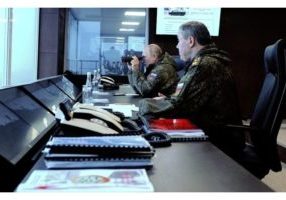


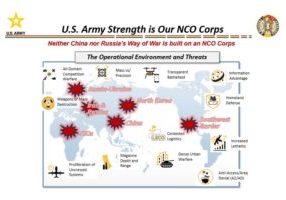
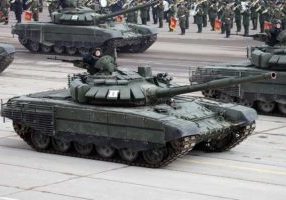
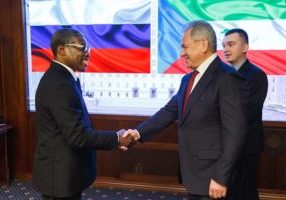
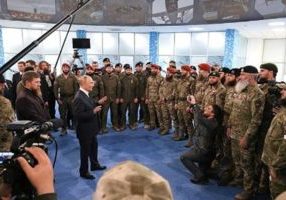



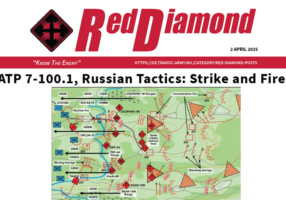





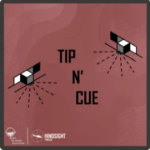
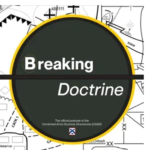


 RUSSIA: How They Fight
RUSSIA: How They Fight  OFFENSE
OFFENSE  DEFENSE
DEFENSE  RECON
RECON  FIRES
FIRES  AIR DEFENSE
AIR DEFENSE  ELECTRONIC WARFARE
ELECTRONIC WARFARE 